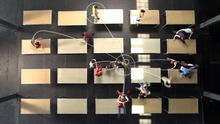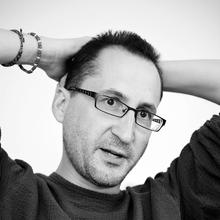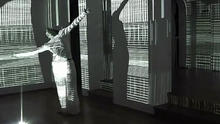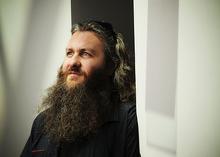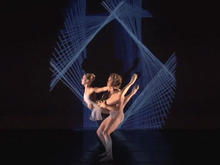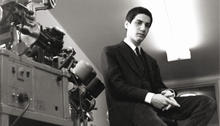William Forsythe
(*1949) is an American dancer and choreographer resident in Frankfurt am Main in Hessen. He is known internationally for his work with the Ballett Frankfurt (1984-2004) and The Forsythe Company (2005-present).
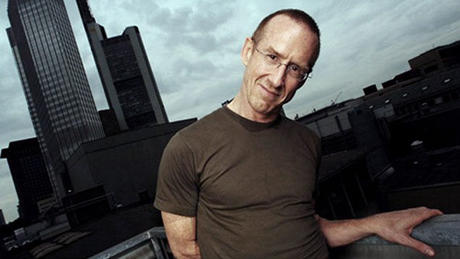
Raised in New York and initially trained in Florida with Nolan Dingman and Christa Long, Forsythe danced with the Joffrey Ballet and later the Stuttgart Ballet, where he was appointed Resident Choreographer in 1976. Over the next seven years, he created new works for the Stuttgart ensemble and ballet companies in Munich, The Hague, London, Basel, Berlin, Frankfurt am Main, Paris, New York, and San Francisco. In 1984, he began a 20-year tenure as director of the Ballet Frankfurt, where he created works such as Artifact (1984), Impressing the Czar (1988), Limb's Theorem (1990), The Loss of Small Detail (1991, in collaboration with composer Thom Willems and designer Issey Miyake), A L I E / N A(C)TION (1992), Eidos:Telos (1995), Endless House (1999), Kammer/Kammer (2000), and Decreation (2003).
After the closure of the Ballet Frankfurt in 2004, Forsythe established a new, more independent ensemble. The Forsythe Company, founded with the support of the states of Saxony and Hesse, the cities of Dresden and Frankfurt am Main, and private sponsors, is based in Dresden and Frankfurt am Main and maintains an extensive international touring schedule. Works produced by the new ensemble include Three Atmospheric Studies (2005), You made me a monster (2005), Human Writes (2005), Heterotopia (2006), The Defenders (2007), Yes we can't (2008), and I Don't Believe in Outer Space (2008). Forsythe’s most recent works are developed and performed exclusively by The Forsythe Company, while his earlier pieces are prominently featured in the repertoire of virtually every major ballet company in the world, including The Kirov Ballet, The New York City Ballet, The San Francisco Ballet, The National Ballet of Canada, England's Royal Ballet, and The Paris Opera Ballet.
Awards received by Forsythe and his ensembles include the New York Dance and Performance "Bessie" Award (1988, 1998, 2004, 2007) and London's Laurence Olivier Award (1992, 1999, 2009). Forsythe has been conveyed the title of Commandeur des Arts et Lettres (1999) by the government of France and has received the German Distinguished Service Cross (1997) and the Wexner Prize (2002).
Forsythe has been commissioned to produce architectural and performance installations by architect-artist Daniel Libeskind, ARTANGEL (London), Creative Time (New York), and the City of Paris. His installation and film works have been presented in numerous museums and exhibitions, including the Whitney Biennial (New York), the Venice Biennale, the Louvre Museum, and 21_21 Design Sight in Tokyo. His performance, film, and installation works have been featured at the Pinakothek der Moderne in Munich and the Wexner Center in Ohio.
In collaboration with media specialists and educators, Forsythe has developed new approaches to dance documentation, research, and education. His 1994 computer application Improvisation Technologies: A Tool for the Analytical Dance Eye, developed with the Zentrum für Kunst und Medientechnologie, is used as a teaching tool by professional companies, dance conservatories, universities, postgraduate architecture programs, and secondary schools worldwide. 2009 marks the launch of Synchronous Objects for One Flat Thing, reproduced, a digital online score developed with The Ohio State University that reveals the organizational principles of the choreography and demonstrates their possible application within other disciplines.
As an educator, Forsythe is regularly invited to lecture and give workshops at universities and cultural institutions. In 2002, Forsythe was chosen as one the founding Dance Mentor for The Rolex Mentor and Protégé Arts Initiative. He currently co-directs and teaches in the Dance Apprentice Network aCross Europe (D.A.N.C.E.) program, an interdisciplinary professional insertion program based at Dresden's Palucca Schule. Forsythe is an Honorary Fellow at the Laban Centre for Movement and Dance in London and holds an honorary doctorate from the Juilliard School in New York.
Source: The Forsythe Company

